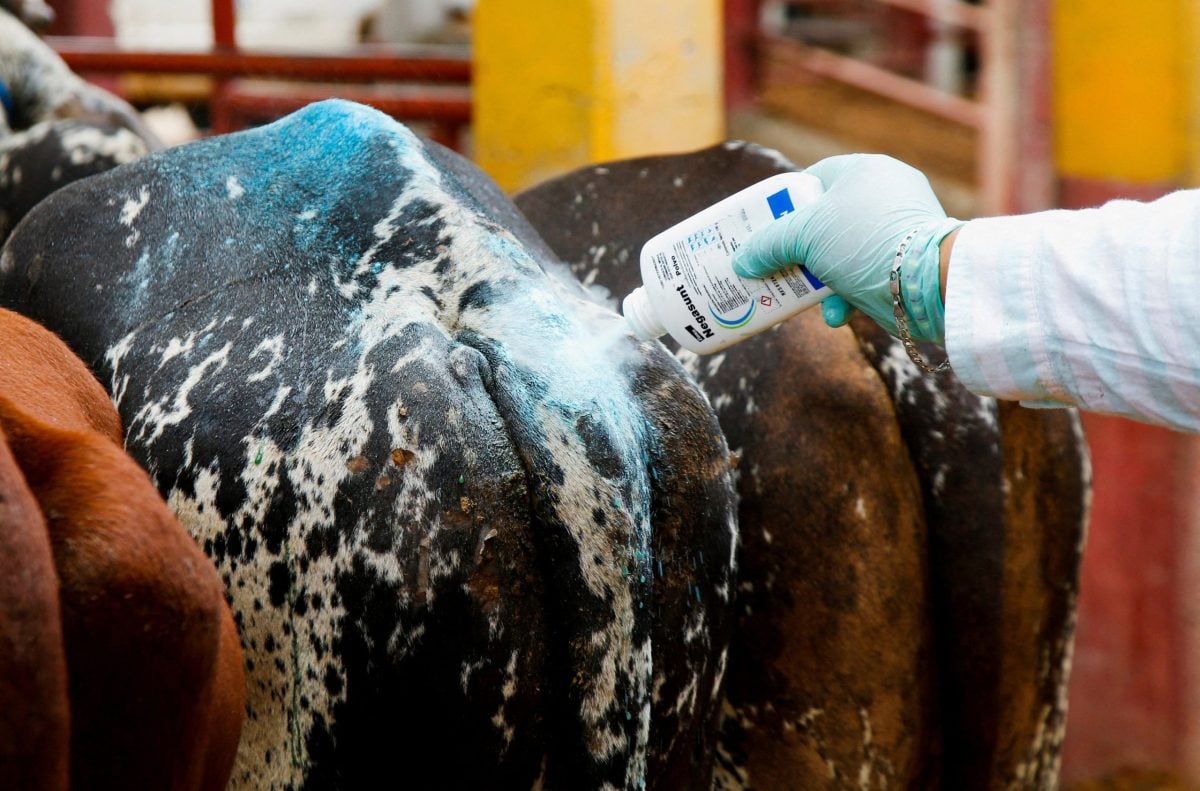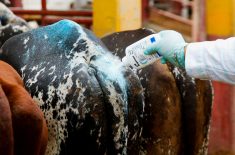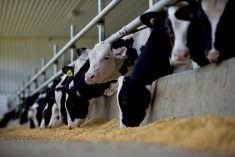4-H capped off its celebration of 100 years in Canada this past weekend by coming home.
Like a good old-fashioned rally, dignitaries, clubs and alumni joined with local residents here May 31 to celebrate. If how the venerable organization honours its past is any indication, 4-H has no worries about its future.
It was on October 9, 1913, when young members of that original club proudly brought their poultry, corn and potatoes to exhibit at Roland’s first fall fair, earning prize money put up by residents, the municipality and the agricultural society.
Read Also

Mexico agriculture secretary says still no date for restarting cattle exports to U.S.
Mexican Agriculture Minister Julio Berdegue said on Wednesday that Mexico and the United States have not yet set a date to resume Mexican cattle exports amid an outbreak of the flesh-eating screwworm parasite.
And in the same spirit that guided the first Boys and Girls Club a century ago, Roland residents and visitors here last weekend opened their wallets once again for 4-H.
The nearly $19,000 raised will be put toward supporting the village’s 4-H Museum, which since 1990 has operated as a community-based venture, housing donated artifacts such as uniforms, banners, trophies, scrapbooks and project paraphernalia.
The Canadian 4-H Council and its anniversary committee have now officially recognized the project as Canada’s national 4-H Museum.
Honour
It’s a huge honour for Roland to have the country’s one and only national museum, and the amount raised is beyond anything they dreamed, said an overwhelmed Kyla Orchard, curator of the museum and head of the community’s busy 15-member 4-H club.
“It’s phenomenal. The money that’s come in is unbelievable,” she said. “I can’t even put it into words what this support that’s come from everybody across Canada means.”
The Canadian 4-H Council will be shipping a large volume of 4-H artifacts which are stored at the Central Experimental Farm in Ottawa.
New items have already arrived. As an anniversary gift, B.C. 4-H has presented Roland museum with the original telegram dated March 1, 1952 signalling the historic name change from Boys and Girls clubs to 4-H. The ‘4-H’ program had its beginnings in the U.S. in 1901 under that name.
Another evening highlight was the unveiling of a commemorative envelope by Canada Post in celebration of the youth development organization.
The first official ‘Boys and Girls Club’ originated in Roland after Manitoba deputy minister of agriculture W.J. Black and Manitoba Agricultural College director of extension Edgar Ward Jones began the program.
Edgar’s grandson, B.C. businessman Ward Jones was in Roland to join the celebrations, and spoke of how he keeps the slogan ‘Learn to do by Doing’ hanging in his Vancouver boardroom “because it still works, folks.”
Edgar Ward Jones married Adelaide Graham of Roland while serving alongside her on the new Boys and Girls Club board of directors.
Artifacts
His family will donate family documents and photos to the museum.
Other speakers in Roland included dean of the faculty of agricultural and food sciences Michael Trevan and Manitoba Premier Greg Selinger.
Selinger said 4-H has made a huge contribution to public service over the decades.
“Schooling is so important, but there’s something beyond reading, writing and arithmetic and that’s developing good citizens for the country. 4-H has been a trailblazer in that regard, all across this great country, and here in Manitoba.”
Roland’s celebrations were part of an intense week of meetings of the Canadian 4-H Foundation and the Canadian 4-H Council plus a gala dinner there May 30. That event attracted nearly 500 4-H alumni, program donors and sponsors, along with numerous dignitaries including federal Agriculture Minister Gerry Ritz and Manitoba’s Minister of Agriculture, Food and Rural Initiatives Ron Kostyshyn.
Community service
Dori Gingera-Beauchemin, Manitoba’s assistant deputy minister of agriculture, and a former member of the McCreary Busy Hands 4-H Club gave the alumni address at the Winnipeg dinner. She spoke to the lasting legacy of 4-H, describing an organization committed to community service.
4-H’ers do not ask, ‘What am I signing up for?’ when asked for help, said Gingera-Beauchemin. “The 4-H’ers response is, ‘Where do I sign up?’”she said. The program has long fostered a profound sense of collective achievement through that commitment to community, she said.
She also spoke of how 4-H members are distinguished by their ability to speak in public. Most people are afraid to get up in front of a crowd, but not a 4-H alumni, she said.
“We stand up. We take a deep breath and we tackle it with the confidence that is the result of 4-H communications,” she said. “This public speaking capacity we have is the hallmark of the 4-H program.”
Gala’s attendees saw that in action when 15-year-old twin brothers Josh and Nate Kolano wowed the crowd with an impassioned speech about life on their family’s Sundown-area grain and hog farm, their confidence for the future of agriculture, and their own plans to farm one day. Unbeknown to most in the audience, the well-spoken teens were born with hearing impairments and only mastered speaking around the age of five.
Young speakers
They weren’t nervous at all speaking to the crowd, said Josh Kolano.
“You learn to do by doing,” added his brother, Nate. The pair won silver in the provincial competitions (Seniors two-person visual) category this spring.
With a century behind it, 4-H can count nearly two million young Canadians who have taken part in hundreds of thousands of projects and these opportunities to learn to do by doing, said Rob Black, who completed his term as president Canadian 4-H Council this spring.
Black said by celebrating 4-H’s legacy, they are spurring new interest in the program and what it can continue to offer to young Canadians.
“This opportunity with the 100th anniversary allows us to springboard into the future,” he said. “4-H officials are working on intensive strategic planning around their ‘Embrace the Future’ initiative, and want to “engage and re-engage alumni whether they be parents or leaders or donors or sponsors.”
The enthusiasm for the 100th anniversary celebrations has been a great start to 4-H’s next century, Black said.
— Lorraine Stevenson is a reporter for the Manitoba Co-operator at Carman, Man. This article appeared in the June 6, 2013 issue.












